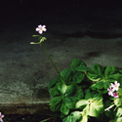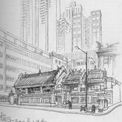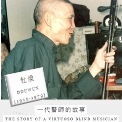 Collections
Collections The Legend of Silk and Wood: A Hong Kong Qin Story
The Legend of Silk and Wood: A Hong Kong Qin Story Art of Silk and Wood
Art of Silk and Wood Qin Making Procedure
Qin Making Procedure Lacquering
Lacquering
-
Step 8: Lacquering
A qin body with an already sanded cement base can be coated with lacquer. Surface lacquer strengthens the base cement and is beneficial for timbre and appearance. The lacquer has to be applied thinly and evenly. After a layer is dried, the highest-grit waterproof abrasive paper is used to polish the qin until the lacquer has been smoothened. Another layer of lacquer is applied onto the qin body until it glows with an even shine. The last step in lacquering is known as shine removal. It is done by coating the qin with a few layers of cooked lacquer and then polishing it with fine powder instead of abrasive paper to reveal the natural lustre. Raw lacquer dries easily in warm and humid weather. For this reason, lacquering and cement priming is usually carried out in either the spring or summer. After lacquering is complete, a steel knife can be used to carve the qin’s name and other inscriptions on the back of the instrument.





